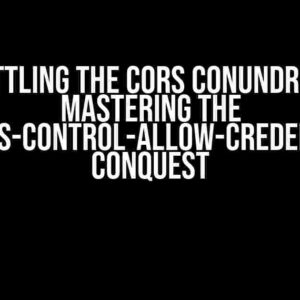Hey there, CSS wizards and enthusiasts! Are you tired of plain, boring triangles in your web designs? Do you want to take your CSS skills to the next level and create something truly unique and eye-catching? Look no further! In this comprehensive guide, we’ll show you how to add an inward curve at both sides of a triangle built using CSS.
What You’ll Need
To get started, you’ll need a basic understanding of CSS and HTML. If you’re new to CSS, don’t worry! We’ll break it down step by step. You’ll also need a code editor or IDE to write and test your code.
Creating the Basic Triangle
Before we add the inward curve, let’s start with the basics. To create a triangle using CSS, we’ll use the following code:
In your CSS file, add the following code:
.triangle {
width: 0;
height: 0;
border-left: 50px solid transparent;
border-right: 50px solid transparent;
border-bottom: 100px solid #000;
}
This will create a basic triangle with a black border at the bottom. You can adjust the size and color to your liking.
Adding the Inward Curve
Now that we have our basic triangle, let’s add the inward curve. To do this, we’ll use CSS pseudo-elements and some clever styling. Add the following code to your CSS file:
.triangle::before {
content: "";
position: absolute;
top: 0;
left: 0;
width: 50px;
height: 100px;
background-color: #000;
border-radius: 50% 0% 0% 50%;
transform: rotate(45deg);
z-index: -1;
}
.triangle::after {
content: "";
position: absolute;
top: 0;
right: 0;
width: 50px;
height: 100px;
background-color: #000;
border-radius: 0% 50% 50% 0%;
transform: rotate(-45deg);
z-index: -1;
}
Let’s break down what’s happening here:
- We’re using the
::beforeand::afterpseudo-elements to create two additional elements within our triangle. - We’re setting the
positiontoabsoluteso the elements are positioned relative to the triangle. - We’re setting the
topandleftproperties to 0 so the elements are aligned with the top-left corner of the triangle. - We’re setting the
widthandheightto 50px and 100px, respectively, to create a rectangular shape. - We’re setting the
background-colorto #000 to match the triangle’s border color. - We’re using
border-radiusto create a curved shape. The value is set to 50% 0% 0% 50% for the left curve and 0% 50% 50% 0% for the right curve. - We’re using
transformto rotate the curves by 45 degrees and -45 degrees, respectively, to create the inward curve effect. - We’re setting the
z-indexto -1 so the curves sit behind the triangle.
Tweaking and Customizing
Now that we have our triangle with an inward curve, let’s explore some ways to customize and tweak the design. Here are a few ideas:
Changing the Curve Radius
To change the radius of the curve, simply adjust the border-radius values. For example:
.triangle::before {
border-radius: 30% 0% 0% 30%;
}
.triangle::after {
border-radius: 0% 30% 30% 0%;
}
This will create a more subtle curve. Experiment with different values to achieve the desired effect.
Changing the Curve Color
To change the color of the curve, simply adjust the background-color value. For example:
.triangle::before {
background-color: #f00;
}
.triangle::after {
background-color: #f00;
}
This will change the curve color to red. You can use any hex code or color name to match your design.
Adding a Gradient
To add a gradient to the curve, we can use the background property with a linear gradient. For example:
.triangle::before {
background: linear-gradient(to bottom, #f00, #ff0);
}
.triangle::after {
background: linear-gradient(to bottom, #f00, #ff0);
}
This will create a gradient that transitions from red to yellow. You can adjust the gradient direction and colors to match your design.
Common Issues and Solutions
As with any complex CSS design, you may encounter some issues. Here are some common problems and solutions:
Curve Not Showing
If the curve is not showing, check that you have set the position property to absolute and the z-index property to -1. Also, make sure the curve elements are not overlapping with other elements.
Curve Not Curving
If the curve is not curving, check that you have set the border-radius property correctly. Make sure the values are in the correct order (e.g., 50% 0% 0% 50%). Also, check that the curve elements are not overlapping with other elements.
Triangle Not Aligning
If the triangle is not aligning with the curve, check that you have set the top and left properties correctly. Make sure the values are set to 0 or a specific value that aligns with your design.
Conclusion
And there you have it! With these simple steps, you can add an inward curve at both sides of a triangle built with CSS. Remember to experiment with different values and properties to customize the design to your liking. Happy coding!
| Property | Description |
|---|---|
border-radius |
Defines the radius of the curve |
transform |
Defines the rotation of the curve |
z-index |
Defines the stacking order of the curve |
This table provides a quick reference guide to the key properties used in this tutorial.
Here is the HTML code with 5 questions and answers about “How to add inward curve at both sides to triangle build using CSS”:
Frequently Asked Question
Get the answers to your pressing questions about creating a triangle with an inward curve at both sides using CSS!
Can I use CSS borders to create a triangle with an inward curve?
While CSS borders can be used to create a triangle, it’s not the best approach for creating an inward curve. Instead, use CSS pseudo-elements, like ::before or ::after, to create the curved shape.
How do I create a curved shape using CSS?
To create a curved shape, use the border-radius property and set a large radius value. For example, `.curve { border-radius: 50%; }` will give you a circular shape. You can then adjust the radius value to achieve the desired curve.
What’s the best way to position the curved shapes on either side of the triangle?
Use absolute positioning to place the curved shapes on either side of the triangle. Set the triangle as the relative parent element and the curved shapes as absolute children. This will allow you to precisely position the curved shapes.
Can I use CSS gradients to create the inward curve effect?
Yes, CSS gradients can be used to create the inward curve effect. You can create a gradient that transitions from transparent to a solid color, which will give the illusion of a curved shape. This method is particularly useful for creating a smooth, curved triangle.
Are there any browser compatibility issues I should be aware of?
As with any CSS technique, browser compatibility can be an issue. Make sure to test your code in multiple browsers and use vendor prefixes (like -webkit- or -moz-) to ensure compatibility. You can also use a CSS prefixer tool to simplify the process.



